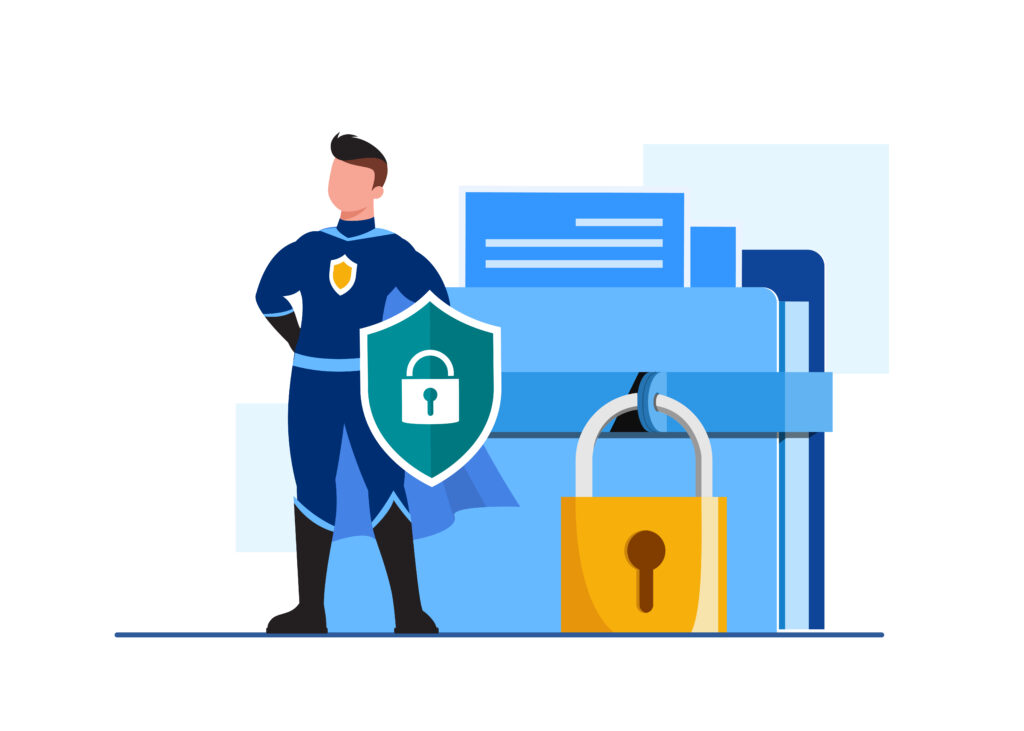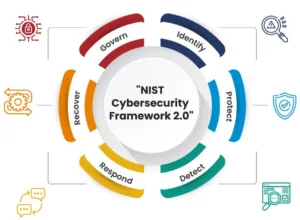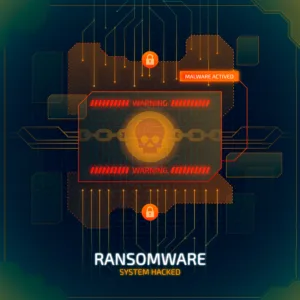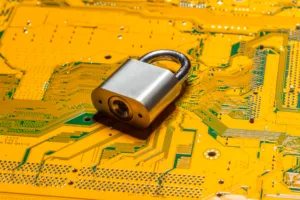
Table of Contents
In this blog, we’ll delve into the concept of cybersecurity validation, exploring its critical role in protecting our digital assets.
I. Introduction
In an era where our lives are increasingly intertwined with the digital realm, the importance of cybersecurity has never been more pronounced. We live, work, and play in a world where information is exchanged at the speed of light, but so are the threats that seek to exploit vulnerabilities in our digital fortresses.
A. The Digital Threat Landscape
The digital threat landscape is ever-evolving, with cybercriminals constantly devising new strategies to breach our defenses. From sophisticated hacking attempts to phishing scams and ransomware attacks, our online lives are under constant siege. The consequences of a security breach can be catastrophic, leading to financial losses, privacy violations, and even national security risks.
B. The Role of Cybersecurity Validation
In this blog post, we aim to shed light on an essential component of safeguarding our digital lives – cybersecurity validation. Cybersecurity validation is the proactive process of evaluating and testing our security measures to ensure they can withstand the relentless assault of cyber threats. It’s the process of fortifying our digital fortresses and ensuring they remain impenetrable.
II. Understanding Cybersecurity Validation
A. Definition and explanation of cybersecurity validation
At its core, cybersecurity validation is the rigorous process of assessing, testing, and verifying the effectiveness of security measures in place to protect digital assets. It’s the systematic approach that goes beyond just setting up security protocols; it ensures that these protocols are robust, resilient, and capable of defending against potential threats.
In cybersecurity validation, various security components, including firewalls, intrusion detection systems, encryption protocols, and access controls, are rigorously tested. The goal is to uncover vulnerabilities and weaknesses before cybercriminals can exploit them.
B. The Significance of Validation in the Cybersecurity Landscape
The significance of cybersecurity validation cannot be overstated. With the relentless evolution of cyber threats, relying solely on traditional security measures is no longer enough. Cybercriminals are continually devising new tactics, and validation is our proactive response to stay ahead of the game.
Validation serves as the last line of defense, identifying potential flaws in the existing security infrastructure and rectifying them before they can be exploited. By conducting regular validation assessments, organizations and individuals alike can significantly reduce the risk of security breaches and data compromises.
C. Differentiating between Cybersecurity Validation and Traditional Security Measures
It’s important to understand that cybersecurity validation is not a replacement for traditional security measures but rather a complementary approach. Traditional security measures, such as antivirus software, firewalls, and password policies, establish the foundational layer of protection. These measures act as barriers against known threats and are essential for any security strategy.
On the other hand, cybersecurity validation serves as an ongoing evaluation of the effectiveness of these security measures. It focuses on identifying potential weaknesses and unearths vulnerabilities that might not be apparent with traditional security solutions alone. In essence, while traditional security measures build the walls of our digital fortress, cybersecurity validation ensures those walls are fortified and impenetrable.
III. The Threat Landscape
In today’s interconnected world, the threat landscape is a vast and complex ecosystem of potential risks. Cybersecurity threats come in various forms, ranging from individual hackers to well-organized cybercrime syndicates and even nation-state actors. These threats pose a myriad of challenges to individuals, businesses, and governments.
A. Common cybersecurity threats and challenges include:
– Malware and Ransomware: Malicious software that can infect systems, steal data, or hold it hostage for a ransom.
– Phishing Attacks: Deceptive tactics to trick individuals into revealing sensitive information like passwords or credit card details.
– Distributed Denial of Service (DDoS) Attacks: Overwhelming online services with a flood of traffic, rendering them inaccessible.
– Insider Threats: Security breaches initiated or facilitated by individuals within an organization.
– Advanced Persistent Threats (APTs):Long-term, targeted cyberattacks by well-funded adversaries.
B. Highlighting the Evolving Nature of Cyber Threats
One of the most striking aspects of the current threat landscape is the ever-evolving nature of cyber threats. Cybercriminals are agile and continuously adapt their tactics to exploit new vulnerabilities and technological advancements. They capitalize on social engineering techniques, exploit zero-day vulnerabilities, and use increasingly sophisticated methods to achieve their goals.
What was considered secure yesterday may not be so today, and the pace of change in the digital world is relentless. As a result, cybersecurity must be equally dynamic and adaptive to counter these evolving threats effectively.
C. Why Traditional Security Measures May Not Be Enough
Traditional security measures, while vital, often fall short in the face of these dynamic threats. Here’s why:
1. Lack of Adaptability: Many traditional security solutions are static and struggle to keep up with the rapid changes in the threat landscape. They can’t effectively defend against new and previously unseen attack vectors.
2. Overreliance on Known Signatures: Antivirus software, for example, relies on known malware signatures to detect threats. This approach can’t detect novel malware or APTs that are specifically designed to evade detection.
3. Insider Threats: Traditional measures may not adequately address threats that originate from within an organization, making them vulnerable to internal breaches.
4. Human Error: Cybersecurity is not just a technological challenge; it’s a human one too. Employees can inadvertently compromise security through actions like clicking on phishing links or using weak passwords.
In this context, cybersecurity validation emerges as a crucial element in the defense against cyber threats. It serves as the proactive, adaptive, and thorough assessment required to identify and address vulnerabilities, providing a critical layer of protection to complement traditional security measures. In the next section, we will explore the role of cybersecurity validation in addressing these challenges.
IV. The Role of Cybersecurity Validation
A. Exploring the Key Objectives of Cybersecurity Validation
Cybersecurity validation serves several critical objectives in the quest for a secure digital environment:
1. Detect Vulnerabilities: One of the primary goals of validation is to identify vulnerabilities in your digital infrastructure. These vulnerabilities can be technical weaknesses, misconfigurations, or areas where security measures may be insufficient.
2. Assess Resilience: Validation tests the resilience of security measures to withstand different types of attacks. It helps answer the question, “Can our defenses withstand real-world threats?”
3. Compliance and Standards: Validation ensures that an organization or individual complies with industry-specific standards and regulations. This is especially important for sectors like healthcare, finance, and government.
4. Continuous Improvement: Validation is not a one-time event but an ongoing process. It provides insights into what needs to be improved, updated, or changed to bolster security continually.
B. How Validation Helps in Identifying Vulnerabilities and Weaknesses
Validation achieves these objectives through a range of methods, including:
1. Penetration Testing: Ethical hackers, often referred to as white-hat hackers, attempt to infiltrate systems to identify weaknesses. This process simulates real-world attacks and helps organizations understand their vulnerabilities.
2. Vulnerability Assessments: Scans and assessments are conducted to pinpoint known vulnerabilities or weaknesses in software, networks, or systems. These assessments are crucial for timely patching and updates.
3. Security Audits: Comprehensive audits of security policies, procedures, and configurations are conducted to ensure they align with best practices and regulations.
4. Red Team vs. Blue Team Exercises: In some cases, organizations pit their own cybersecurity teams against each other, with one acting as the “red team” trying to breach security and the other as the “blue team” defending against these simulated attacks.
C. The Role of Validation in Ensuring Data Protection and Privacy
In an era where data is a valuable commodity, the role of validation in data protection and privacy is paramount. Here’s how it contributes:
1. Data Breach Prevention: By identifying vulnerabilities and weaknesses, validation helps prevent data breaches that could lead to sensitive information leakage.
2. Compliance with Privacy Laws: Validation ensures that an organization adheres to data protection laws and regulations like GDPR (General Data Protection Regulation) or HIPAA (Health Insurance Portability and Accountability Act).
3. Privacy by Design: Incorporating validation from the outset ensures that data privacy is considered in the development of systems and applications, rather than being retrofitted after the fact.
4. Customer Trust: Demonstrating a commitment to data protection through validation can enhance customer trust and protect an organization’s reputation.
V. Methods and Techniques
A. Overview of Various Methods and Techniques Used in Cybersecurity Validation
Cybersecurity validation encompasses a diverse set of methods and techniques designed to evaluate the security posture of digital systems comprehensively. These methods can be broadly categorized into several key approaches:
1. Penetration Testing: Ethical hackers simulate cyberattacks to identify vulnerabilities and weaknesses in a system. This testing provides a realistic view of an organization’s security preparedness.
2. Vulnerability Assessments: Automated tools and manual inspections are used to identify known vulnerabilities in software, networks, and systems. This approach helps organizations prioritize and address weaknesses.
3. Security Audits: Comprehensive reviews of an organization’s security policies, procedures, and configurations ensure alignment with best practices and regulatory compliance.
4. Red Team vs. Blue Team Exercises: Organizations conduct these exercises to assess their security defenses. The “red team” simulates an attack, while the “blue team” defends against these simulated attacks. These exercises help identify and fix vulnerabilities.
5. Threat Hunting: Proactive and continuous searches for threats within an organization’s network help identify potential risks before they lead to breaches.
B. Discussing Penetration Testing, Vulnerability Assessments, and More
1. Penetration Testing: Penetration testing, often referred to as pen testing, is a widely recognized method in cybersecurity validation. Ethical hackers or security professionals emulate the tactics of cybercriminals to test the resilience of a system. They attempt to infiltrate networks and applications, uncover vulnerabilities, and provide actionable recommendations for improving security.
2. Vulnerability Assessments: Vulnerability assessments involve systematic scans of systems and networks to identify known vulnerabilities. These assessments help organizations prioritize which vulnerabilities to address first, ensuring a more efficient use of resources.
3. Security Audits: Security audits involve in-depth reviews of an organization’s security policies, procedures, and configurations. They ensure that an organization’s security practices align with industry standards and regulations. Auditors examine and assess all aspects of an organization’s security, from employee training to physical security measures.
4. Red Team vs. Blue Team Exercises: These exercises create a controlled environment where the “red team” attempts to breach security, and the “blue team” defends against these simulated attacks. The goal is to identify gaps and weaknesses in security defenses, ultimately strengthening them.
5. Threat Hunting: Threat hunting involves actively seeking out signs of compromise within an organization’s network, even when there are no immediate indicators of a security breach. This proactive approach helps detect threats early, reducing the potential impact of cyberattacks.
C. Real-World Examples of How Validation Has Prevented Security Breaches
Validation methods have played pivotal roles in preventing security breaches in numerous real-world scenarios. For instance, penetration testing has exposed vulnerabilities in critical infrastructure systems before malicious actors could exploit them. Vulnerability assessments have helped organizations patch known security flaws, preventing potential attacks. Security audits have ensured that organizations comply with data protection laws, reducing the risk of data breaches and legal repercussions.
VI. Best Practices for Effective Validation
A. Tips for Implementing Cybersecurity Validation Effectively
Implementing cybersecurity validation effectively requires a strategic approach. Here are some key tips to consider:
1. Set Clear Objectives: Clearly define the goals of your validation process. What do you want to achieve? Understanding your objectives helps shape the validation plan.
2. Regular Assessments: Conduct periodic assessments rather than one-off tests. Cyber threats evolve, and your defenses should be continually validated to remain effective.
3. Comprehensive Coverage: Ensure that your validation assesses all aspects of your digital infrastructure, including networks, applications, and employees. Don’t leave any vulnerabilities unexamined.
4. Holistic Approach: Cybersecurity validation is not just about technology; it also involves policies, procedures, and training. Assess your organization’s cybersecurity posture from a holistic perspective.
5. Collaboration: Encourage collaboration between IT, security teams, and other relevant departments. Effective validation requires cooperation and information sharing.
6. Documentation: Maintain detailed records of validation results, including vulnerabilities discovered and actions taken to remediate them. Documentation is essential for tracking progress and demonstrating compliance.
B. The Importance of Regular Validation Assessments
Regular validation assessments are critical for maintaining a robust security posture. Cyber threats are dynamic, and the vulnerabilities in your digital environment can change over time. Here’s why regular assessments are crucial:
1. Stay Ahead of Evolving Threats: Regular assessments help organizations stay ahead of rapidly evolving cyber threats. They provide insights into emerging vulnerabilities and weaknesses that might not have been present during previous assessments.
2. Timely Remediation: By conducting assessments at regular intervals, organizations can identify and address vulnerabilities promptly. This reduces the window of opportunity for cybercriminals to exploit weaknesses.
3. Compliance and Regulatory Requirements: Many industries have specific compliance requirements that mandate regular security assessments. Regular validation ensures compliance with these regulations.
4. Continuous Improvement: Regular validation assessments support a culture of continuous improvement in cybersecurity. Each assessment helps an organization refine its security measures and adapt to new challenges.
C. Case Studies of Organizations That Have Successfully Used Validation to Protect Their Digital Assets
Let’s take a look at a few case studies of organizations that have effectively used cybersecurity validation to safeguard their digital assets:
1. XYZ Corporation: XYZ Corporation, a multinational conglomerate, regularly conducts penetration testing and vulnerability assessments on its critical systems. Through these assessments, they discovered and patched several vulnerabilities, preventing potential data breaches and ensuring the security of their sensitive information.
2. ABC Healthcare: In the healthcare sector, data security is paramount. ABC Healthcare implemented regular security audits to ensure compliance with strict regulations like HIPAA. These audits not only helped them avoid hefty fines but also improved the overall security of patient records and medical data.
3. 123 Tech Startup: A fast-growing tech startup, 123 Tech, leveraged red team vs. blue team exercises to evaluate and strengthen its security defenses. By simulating real-world cyberattacks, they identified and fixed security gaps, providing peace of mind to their clients and investors.
These case studies highlight the effectiveness of cybersecurity validation in diverse contexts and demonstrate that organizations of various sizes and industries can benefit from these practices. In the upcoming sections, we will discuss the challenges and pitfalls associated with cybersecurity validation and explore the future of this critical cybersecurity discipline.
VII. Challenges and Pitfalls
A. Common Challenges and Pitfalls in Cybersecurity Validation
While cybersecurity validation is a crucial aspect of safeguarding digital assets, it’s not without its challenges and potential pitfalls. Some common issues include:
1. Resource Constraints: Many organizations, especially small businesses, may lack the necessary resources, both in terms of skilled personnel and financial budget, to conduct comprehensive validation.
2. Complexity: The sheer complexity of modern digital systems can make validation a daunting task. Identifying and addressing vulnerabilities across a multifaceted infrastructure can be challenging.
3. False Positives and Negatives: Validation tools and techniques may produce false positives (indicating vulnerabilities that don’t exist) or false negatives (failing to detect real vulnerabilities), leading to confusion and inefficiency.
4. Resistance to Change: Some employees may resist security measures imposed during the validation process, leading to a lack of cooperation and potential security gaps.
B. How to Address and Overcome These Challenges
Addressing these challenges requires a proactive and strategic approach:
1. Resource Management: Prioritize validation efforts based on risk and available resources. Consider outsourcing validation to experts if in-house resources are limited.
2. Regular Training: Invest in training for your validation team to ensure they are well-equipped to handle complex systems and tools effectively.
3. Tool Selection: Choose validation tools carefully, considering their effectiveness and accuracy to minimize false positives and negatives.
4. Communication and Education: Educate employees about the importance of security and their role in the process. Effective communication can reduce resistance to change.
C. The Consequences of Neglecting Validation
Neglecting cybersecurity validation can have severe consequences, including:
1. Data Breaches: Without validation, vulnerabilities may remain undiscovered, making it easier for cybercriminals to breach systems and steal sensitive data.
2. Reputation Damage: Security breaches can lead to a loss of trust from customers and clients, damaging an organization’s reputation and potentially leading to financial losses.
3. Compliance Violations: Neglecting validation may result in non-compliance with industry-specific regulations, leading to legal consequences and fines.
4. Financial Losses: The financial impact of security breaches, including the costs of investigation, remediation, and potential lawsuits, can be significant.
5. Operational Disruption: Cyberattacks can disrupt day-to-day operations, causing downtime and impacting an organization’s ability to function effectively.
VIII. The Future of Cybersecurity Validation
A. Discussing Emerging Trends and Technologies in Cybersecurity Validation
The future of cybersecurity validation is likely to be shaped by several emerging trends and technologies:
1. AI and Machine Learning: Artificial intelligence (AI) and machine learning are increasingly being integrated into validation tools to enhance threat detection and response. These technologies can analyze vast datasets to identify anomalies and potential security risks.
2. Automation: The automation of validation processes can improve efficiency and reduce response times. Automated tools can continuously scan for vulnerabilities and apply patches or configuration changes as needed.
3. Cloud Security Validation: As more organizations move their operations to the cloud, validation processes will evolve to address the unique challenges and opportunities in cloud security. Tools and practices specific to cloud environments will become essential.
4. Zero Trust Security: The Zero Trust model, which assumes that no one, whether inside or outside the organization, can be trusted by default, is gaining traction. Validation practices will need to align with the principles of Zero Trust, focusing on continuous authentication and authorization.
B. Predictions for the Role of Validation in the Ever-Changing Threat Landscape
In the face of an ever-changing threat landscape, cybersecurity validation will continue to play a critical role. Here are some predictions for its future:
1. Increased Demand: The demand for cybersecurity validation will grow as organizations recognize the importance of proactive security measures. This will result in the expansion of the validation industry.
2. Regulatory Emphasis: Governments and regulatory bodies will likely place greater emphasis on cybersecurity validation as a means to ensure data protection and compliance with privacy laws.
3. Integration with DevSecOps: The integration of cybersecurity validation into the DevSecOps pipeline will become more common, allowing for continuous security testing throughout the software development process.
4. Threat Intelligence Integration: Validation processes will increasingly integrate threat intelligence sources to stay ahead of emerging threats and vulnerabilities.
C. The Importance of Staying Updated and Adaptive in Validation Practices
In this ever-evolving landscape, staying updated and adaptive in validation practices is essential. Here’s why:
1. Continuous Learning: Cyber threats and technologies change rapidly. Security professionals must continuously update their knowledge and skills to remain effective in their roles.
2. Flexibility: Security strategies must be flexible and adaptable to new threats and vulnerabilities. Validation practices should evolve to address emerging challenges.
3. Collaboration: Cybersecurity professionals should collaborate, sharing insights and best practices to collectively address evolving threats.
4. Regular Validation: Regularly conducting validation assessments is essential. Continuous monitoring and assessment of security measures are key to staying ahead of threats.
IX. Conclusion
In conclusion, the future of cybersecurity validation promises to be dynamic and challenging, with emerging trends and technologies reshaping the landscape. To navigate this future successfully, organizations and individuals must commit to staying updated, flexible, and collaborative in their validation practices. This will be critical in maintaining the security of their digital fortresses in the face of ever-evolving cyber threats.
In summary, neglecting cybersecurity validation can have dire consequences, making it a critical aspect of any organization’s security strategy. While challenges and pitfalls exist, they can be mitigated through effective planning and investment in the right resources and training. In the following section, we will explore the future of cybersecurity validation, including emerging trends and technologies in the field.
Read more on https://cybertechworld.co.in for insightful cybersecurity related content.



















